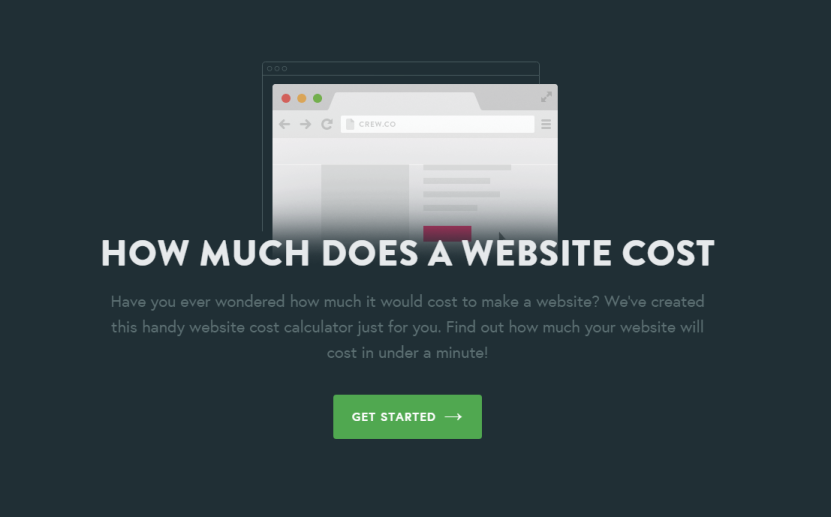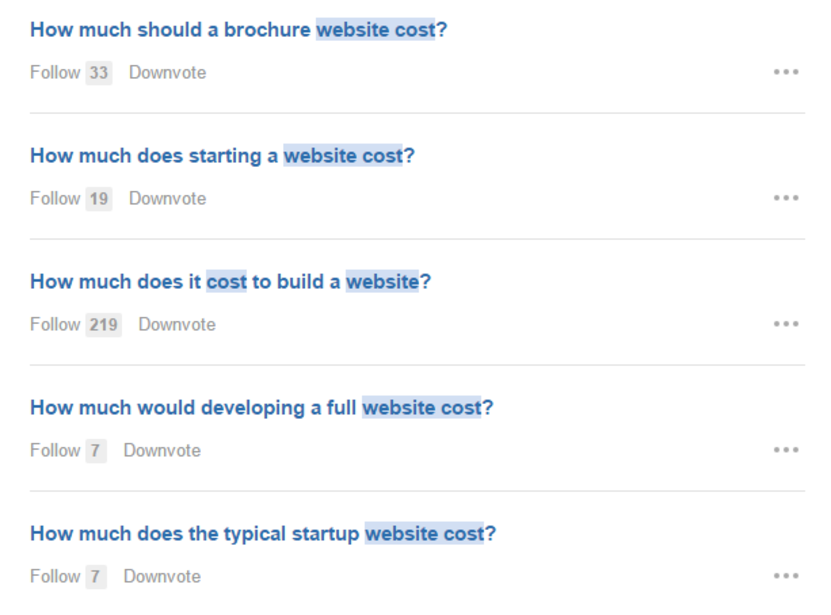Getting Your Foot-in-the-Door: Using 'Dating' Techniques for Agency Success

Barring a few disagreements, most will concur with this statement:
“Healthy long-term relationships are built on a foundation of trust, loyalty, and respect.”
This is true for every important relationship you’ve ever had - business partners, friends, and significant others. You didn’t go from strangers to best friends overnight; it took years of events and interactions to build trust and mutual understanding.
Yet, most agencies continue to see client relationships as some sort of hustle. They get an email lead and bam! - they’re off selling!
On this page:

What most agency-client relationships look like
If you want to develop a ‘serious relationship’ with a client, you have to abandon such short-term thinking. Instead, approach it like dating (not the Tinder type of dating) - get to know your potential client and their challenges, offer some small initial engagements to ‘get to first base’ rather than swinging at the first pitch.
I’ll show you how it works in this article by outlining what a foot-in-the-door offer is, the psychology and reasons to use this type of offer, the 6 things to consider, and 3 things to avoid when crafting a foot-in-the-door offer.
Getting your ‘Foot in the door’: Lessons from the software industry
In the late 1980s, there was a big shift in the way companies sold software. A number of software companies ditched the straight-to-retail model. Instead, they started giving away free versions of their software (i.e. freeware or shareware).
Although limited by features, this gave customers a glimpse at the software’s capabilities. By giving away value for free, most companies found that it became much easier to convince customers to buy the software.
Today, we call this the “freemium” model. You give away your product for free and if customers find the product useful enough, some of them might upgrade to the paid version. This is essentially the digital equivalent of a classic “Foot-in-the-door” sales technique.
The idea behind this technique is simple: if you can get people to agree to a small commitment, you can win their trust. Once you have their trust, you can also get them to agree to a bigger proposition.
One example of a foot-in-the-door strategy is a SaaS company offering a free plan.
For example, MailChimp offers a free plan that includes most of MailChimp’s features but is limited to 2,000 subscribers. This helps MailChimp attract a lot of first-time email marketers and business owners.
Once these users blow past the 2,000 subscriber limit, they have two options:
- Endure the complicated process of porting to another email marketing provider.
- Upgrade their MailChimp subscription to a higher-tier plan.
Unsurprisingly, a lot of users tend to choose option #2.
In fact, after MailChimp launched its free plan, its user base grew five times, its cost of customer acquisition also dropped 8% in just one quarter and MailChimp turned into an email marketing behemoth with over $400M in revenue and over 560 employees.
The lesson: If you can get your foot-in-the-door and kickstart a relationship, you can get clients to commit to a long-term relationship as well.
The psychology behind the ‘Foot-in-the-door’ strategy
To help you understand why the foot-in-the-door strategy works, I want to introduce you to two concepts from psychology:
1. Successive approximations
Successive approximations mean that we ‘approximate’ the future returns from an activity based on past results. If pressing a button named ‘A’ prints the number ‘1’, and pressing a button ‘B’ prints the number ‘2’, we can approximate that pressing ‘C’ will print the number ‘3’.
2. The principle of consistency
This concept comes from the study of persuasion. As Dr. Robert Cialdini points on in the book Influence, people like to be consistent with their past actions and deeds. Once they’ve committed to an action, most people are unwilling to change.
Both of these concepts are a crucial part of the foot-in-the-door strategy:
- Customers approximate the quality of your future offerings based on your existing work.
- Once a customer has made even a small commitment to using a product or service, he/she is more likely to stick with it in the future.
5 reasons why the ‘Foot-in-the-door’ strategy works for agencies
Beyond psychology, there five very real reasons why the foot-in-the-door strategy works, especially when you’re selling services.
1. It helps demonstrate and quantify your value
As an agency, one of your hardest problems is demonstrating how you can add value to a client’s business. “Run an SEO campaign” might sound obvious to you because you know the benefits of SEO, but a client might be clueless.
A strong foot-in-the-door proposition solves this problem by giving clients a glimpse of what you bring to the table. For instance, if you can show the client the potential rankings and revenue impact of an SEO campaign, you’ll be more likely to win a deal.
2. It helps develop rapport and trust
Some businesses can thrive without investing in client relationships - the agency business isn’t one of them.
Most agencies like to call themselves their clients’ “partners”. Given how important the agency can be for the client’s results, this moniker is certainly appropriate. Just as you wouldn’t want to work with an incompetent or abrasive colleague, clients don’t want to work with agency partners they can’t get along with.

But we love your money.... sorry, we meant you!
A foot-in-the-door approach gives you an opportunity to develop trust and rapport with the client, increasing your chances of landing a deal.
3. It helps demonstrate your skills and capability
While rapport and relationships are important, a successful agency-client partnership is still largely skill-based. Clients come to you mostly because they have a need they can’t fulfill in-house.
By getting your foot-in-the-door, you get a chance to demonstrate your capabilities.
Successful foot-in-the-door projects focus on small and uncomplicated deliverables such as marketing graphic or a landing page to showcase a particular skillset.
4. It helps you evaluate whether you want to work with the client
A bad client isn’t worth your team’s time or energy. Unfortunately, most agencies find this out too late.
When you get your foot-in-the-door, you also get a chance to evaluate the client for fit. If the client is too demanding, too abrasive or has too unrealistic expectations, you’ll get a fair warning early on. This way, you’ll avoid the dreaded firing-the-client session.
5. It’s easy to make small commitments - For clients and agencies
We’ve already seen how the easy-to-commit proposition works for clients, but the same also applies to your agency. Most agencies tend to have a laundry list of ideas that they never get around to actually creating. Usually, this is because the idea is too big or requires too many resources.

Toilets and bathrooms; where the magic happens.
A foot-in-the-door project, on the other hand, is much easier to pick up. The small scale means your team is more likely to commit to, and finish such a project. A small project that actually gets made is far better than an expansive idea that never sees the light of day.
How to create a foot-in-the-door offer
We’ve seen what a foot-in-the-door approach is and why it works.The next obvious question is: how can you come up with your own foot-in-the-door offer?
I’ll share some pointers below:
1. Look for gaps between your capabilities and your offerings
The first stop in your strategy should be to list out all your core capabilities and offerings. For instance, a design-development agency might have something like this:
Capabilities:
- UI/UX design, Photoshop/Illustrator
- Objective-C, Swift, and Java (for mobile development)
- JavaScript, Python, CSS, and HTML (for web app development)
Offerings:
- Website, web app, and mobile app development
- Experience design
- UX audits & analysis
- Branding & identity
And so on.
Once you have this list, look for gaps between your capabilities and your offerings. Try to find something fits your capabilities, but is fast (and cheap) enough to lure in customers.
For instance, if you have strong Illustrator/Photoshop capabilities, you might offer logo design as a ‘foot-in-the-door’. Since logos are easy to create (as compared to a complete web design) and affordable, you can use it to give customers a glimpse of your capabilities.
2. Solve a customer pain-point
One of the core tenets of any successful foot-in-the-door offer is that it must solve a customer pain point.
Consider an example: Crew is a “distributed agency” that connects clients with talented freelancers. A lot of clients who came to Crew had a common question: “how much does a website or app actually cost?”
Instead of giving them a templatized answer, Crew made a website to help them calculate the potential cost of a website.

This website makes it easier for them to filter clients
This app accomplished three things:
- It addressed a common customer pain point - lack of insight about website development costs.
- It introduced customers to Crew and helped collect targeted leads.
- It primed customers to see the recommended pricing as “normal” (i.e. price anchoring). This helped reduce resistance to Crew’s actual pricing for its service.
So how do you find your customers’ pain points?
Here are a few tactics:
A) Look through keyword data and find commonly repeated keywords. Target “how to” keywords that include words like “find”, “solve”, “problem”, “solution”, etc.
In Crew’s case, a number of customers were searching for variations of “website cost”.
B) Look through public forums and sites like Quora. If you see a lot of people asking the same questions or posting the same problem, it might be a good candidate for an offer.
For example, there are a lot of questions about the cost of different websites on Quora, indicating that it’s a common problem.

Crowdsource your foot-in-the-door offer on Quora
C) Survey your customers and visitors. The best way to understand your market’s pain points is to straight up ask them. Survey your site visitors and ask them what common problems they face. You can also interview your existing customers.
If you find a common pain point that can be easily solved, turn it into an affordable solution.
3. “Productize” an existing offering
A great way to get your foot-in-the-door is to create a product out of your existing offerings.
A client might hesitate to try your services if it requires a $5,000 commitment and a long sales process. But if you create your service as a ‘product’ that costs $50 and can be purchased with a credit card, a client would be much more willing to give it a try.
To do this, you need to:
- Break down an offering into its constituent parts
- Find the part with the lowest barrier to entry and cost of execution
- Turn it into a standalone, à la carte product
For example, suppose a marketing agency sells content strategy and development to its clients. This is a complex offer with a number of constituent parts, such as:
- Content audit and analysis
- Content branding and ideation
- Content development focusing on blog posts, whitepapers, eBooks, and infographics
- Content distribution
From these constituent parts, we can see that creating blog posts might make a good potential foot-in-the-door offer. It’s something clients can easily understand, has a low cost of execution, and can be created at scale.
The agency can then create a separate ‘product’ where it offers blog post creation at a fixed price. This makes it easy for clients to buy the service and get a glimpse at your agency’s quality of work. You also get a valuable lead that can be turned into a bigger deal over time.
4. Prioritize face-to-face delivery
Your foot-in-the-door offer is essentially a way to acquaint clients with your company and nudge them towards a deal. You’ll find that this is much easier to do if you can deliver the results of your offer face-to-face, in-person, over the phone or on Skype.
Besides the obvious benefit of being able to talk to prospects (and persuade them better), face-to-face delivery also solves the “perceived value” problem. Results delivered over email might be seen as “low value” as they can be automated. But a phone call signals to the client that you actually invested time and energy into generating the results.

What they’ll most likely do if you send your offer via email
This makes it easier to transition from a free (or cheap) initial offer to an actual relationship.
For instance, a content marketing agency might offer a free content consultation over a phone call. This avoids the perception that you might be running the prospect’s site through some automated auditor. The “free” consultation follow-through further increases the perceived value of the offer.
6 Things to keep in mind when creating your foot-in-the-door offer
If you’ve followed the section above, you might already have a big list of ideas for your foot-in-the-door offer.
Before you can take this offer live, there are a few things you should keep in mind:
1. Balance cost with long-term opportunities
A foot-in-the-door offer usually has two costs associated with it:
- Cost of development (for website/app)
- Cost of delivery (for service, or for hosting a website or app)
This should also include the opportunity cost of diverting your resources towards building/delivering the product. Typically, websites/apps will have a high cost of development and low cost of delivery. Services sold as products (such as blog post creation) will have low development cost and high delivery cost.
While your offer doesn’t have to be profitable by itself, it should lead to long-term opportunities. If the cost of developing or delivering the offer is too high vs. the opportunities it generates, it can impact profitability.
2. Keep the barrier to entry low
For an offer to be viable, it should have a low barrier to entry, both for you and the client. That is:
- Clients should be able to sign-up for or buy your product/service easily
- Your team should be able to create and deliver the product/service easily with your existing skill-set
It’s also a good idea to house the offer on a separate website (or at the very least, a subdomain) to make it more discoverable.
Adopt steps to remove the barriers to entry, such as reducing form length during sign-up, using payment processors to fast-track payment, etc.
3. Pick an offer that’s easy to understand
Your potential clients shouldn’t have to scratch their heads just to figure out what your offer is about.

Both the offer and its pricing (if it is paid) should be easy to understand.
For example:
- Good offer: “We’ll create a 1,000-word blog post for $100”. Clients already know what a blog post is. The $100/post pricing model is easy enough to understand as well.
- Bad offer: “We’ll audit your site and improve technical SEO for $1/page”. Most clients won’t understand technical SEO or the $1/page pricing.
4. The offer should have strong perceived value
Your clients should walk away from the offer believing that they got their money’s (or time’s) worth. A high perceived value will make clients more likely to try your offer. It will also lead to a more positive impression of the offer (and your company).

Value, of course, is subjective. Most valuable offers have one or more of the following qualities:
- Are highly educational
- Are scarce or limited in quality
- Deliver instant results
- Solve a pressing need
An offer that is readily available from your competitors has low perceived value. This is why conventional eBooks/guides and tools like “website/SEO graders” make for poor offers - far too many people are already using them.
Pick something that is niche and substantial enough to be seen as highly valuable.
5. The offer should lead to a positive first interaction
The very reason to have a foot-in-the-door offer is to give clients a good first impression of your business. If your offer is poorly designed (in the case of a website/app) or poorly delivered (in the case of a service), you’ll actually hurt your chances of winning the client’s business.
Therefore, when you select an offer, make sure that you:
- Have the necessary skills to develop and market it
- Have the resources to deliver the offer in a timely manner
- Have the capability to scale if necessary
6. Lead to your core offering
Think of your foot-in-the-door offer as a “trailer” to your business. It should lead directly to the feature, not cut to commercial.
Any offer you select should have close alignment with your core offerings. For instance, if you don’t sell content development services, don’t use blog post creation as your foot-in-the-door.
It’s also important to think of lead generation when you’re brainstorming your offers. Pick something that naturally leads to lead capture. A website development calculator that requires users to enter their emails is a good example of a lead capturing offer.
3 things to avoid with your foot-in-the-door offer
We’ve looked at the DOs, but what are some DON’Ts of coming up with a foot-in-the-door offer?
Let’s take a look:
1. Giving away too much
You want the offer to lead to your other offerings, not be the core offering itself. Don’t give away too much else you risk the client not coming back to you at all.
The best offers give just enough value to leave clients wanting more.
2. Spending too much time/resources on development and delivery
The longer your offer takes to develop and deliver, the higher the expectations of profitability from it. A foot-in-the-door offer that takes too many resources will also have to yield high-quality leads and opportunities if it is to be effective.
Avoid this situation by limiting the resources and time you spend developing any offer.
3. Setting the wrong expectations
One thing you want to avoid is giving customers the wrong expectations about your company and its services. For instance, if a foot-in-the-door offer is too cheap, or even free, customers might start assuming that your other services are similarly cheap too. This will increase resistance when you actually try to sell your services.
The right offer has a sweet spot between being affordable and setting the right expectations (in terms of cost) for future interactions.
Conclusion
So we have reviewed what a foot-in-the-door offer is, the psychology and reasons to use this type of offer, the 6 things to consider and 3 things to avoid when crafting a foot-in-the-door offer.
So pull back a bit, stop trying to win big deals in your first interaction with a client. Instead, adopt a dating-like mentality where you start a conversation and gradually escalate things. You’ll find that if you can get your foot-in-the-door with a prospect, selling your services will become much, much easier.
As a start, come up with a foot-in-the-door offer that solves customer pain points or repackages your existing services into a friendlier format. Then keep in mind of the cost vs long-term opportunities, make sure the offer is easy enough to understand, have a strong perceived value, and most importantly, leads to your core offering.
Done right, this approach can change the way you approach client acquisition and revolutionize your agency.













